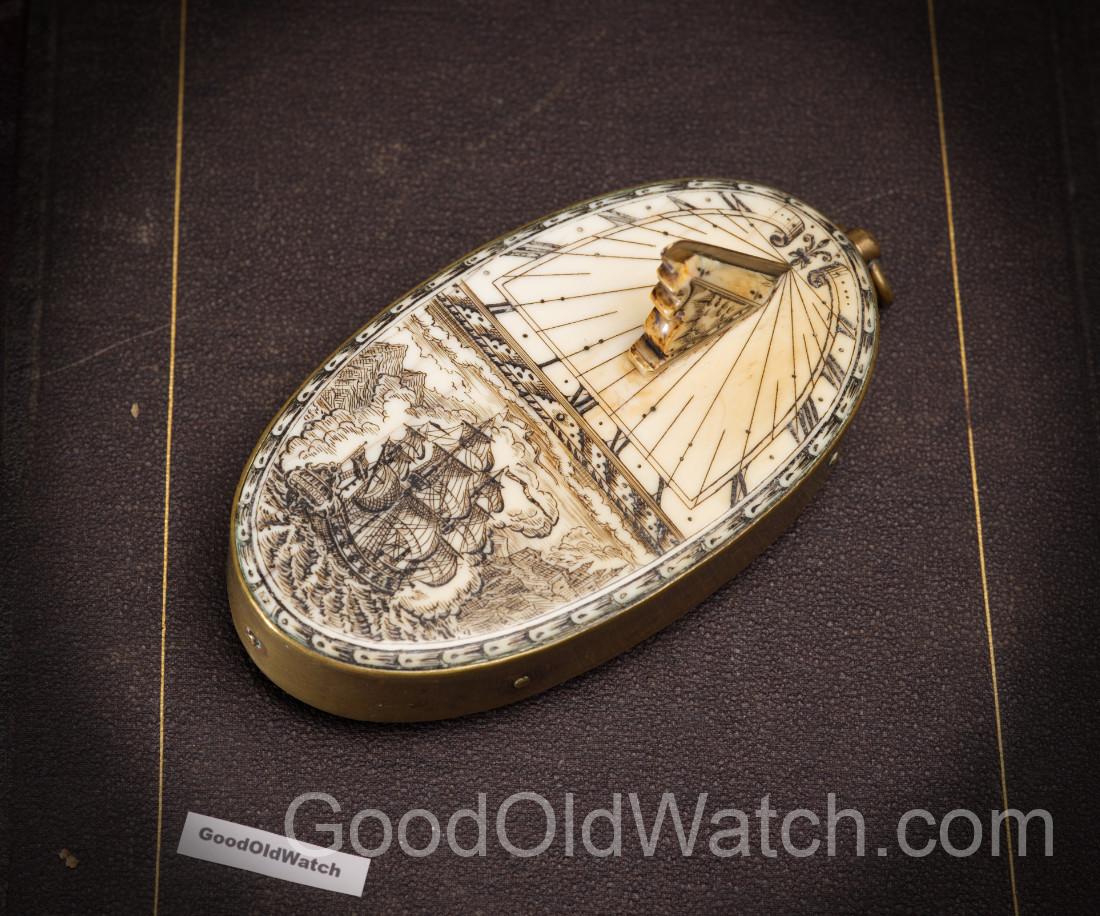 |
Good Old Watch
|
/ Whatsapp: |
Beautiful British brass mounted ivory sundial.
Length is 123mm, width is 68mm.
The oval table sundial is made of brass and wood, with an ivory plate fitted to the top.
The ivory has been elaborately embellished with scrimshaw, a technique of delicately engraving bone or ivory where the engraving is then highlighted by using a pigment.
The dial is positioned in the upper part and has a concentric retrograde hour section with Roman numerals and a carved, triangular gnomon.
The lower half of the body is decorated with a three-master at the high seas.
By experts of Dr. Crott (Mannheim, Germany) auction house, the sundial is attributed to
Thomas Tuttell (1674-1702).
He learned the trade of tool making from Henry Wynne (1640-1709) in London. He became a freeman of the Clockmakers' Company in 1695 and specialized in mathematical tools. Tuttell traded under the name Kings Arms & Globe in Charing Cross in London and his business did very well; he advertised as "His Majesty's Mathematical Instrument Maker & Hydrographer". On February 3 in 1702 the London paper "Post Boy" reported the tragic death of Thomas Tuttell, who drowned while carrying out coastal survey work.
A very similar Scrimshaw sundial by Thomas Tuttell resides in the Walters Art Museum in Baltimore, Maryland, USA. More of his work is exhibited in the British Museum and in the Science Museum, both in London.
Length is 123mm, width is 68mm.
The oval table sundial is made of brass and wood, with an ivory plate fitted to the top.
The ivory has been elaborately embellished with scrimshaw, a technique of delicately engraving bone or ivory where the engraving is then highlighted by using a pigment.
The dial is positioned in the upper part and has a concentric retrograde hour section with Roman numerals and a carved, triangular gnomon.
The lower half of the body is decorated with a three-master at the high seas.
By experts of Dr. Crott (Mannheim, Germany) auction house, the sundial is attributed to
Thomas Tuttell (1674-1702).
He learned the trade of tool making from Henry Wynne (1640-1709) in London. He became a freeman of the Clockmakers' Company in 1695 and specialized in mathematical tools. Tuttell traded under the name Kings Arms & Globe in Charing Cross in London and his business did very well; he advertised as "His Majesty's Mathematical Instrument Maker & Hydrographer". On February 3 in 1702 the London paper "Post Boy" reported the tragic death of Thomas Tuttell, who drowned while carrying out coastal survey work.
A very similar Scrimshaw sundial by Thomas Tuttell resides in the Walters Art Museum in Baltimore, Maryland, USA. More of his work is exhibited in the British Museum and in the Science Museum, both in London.
Item is not available





